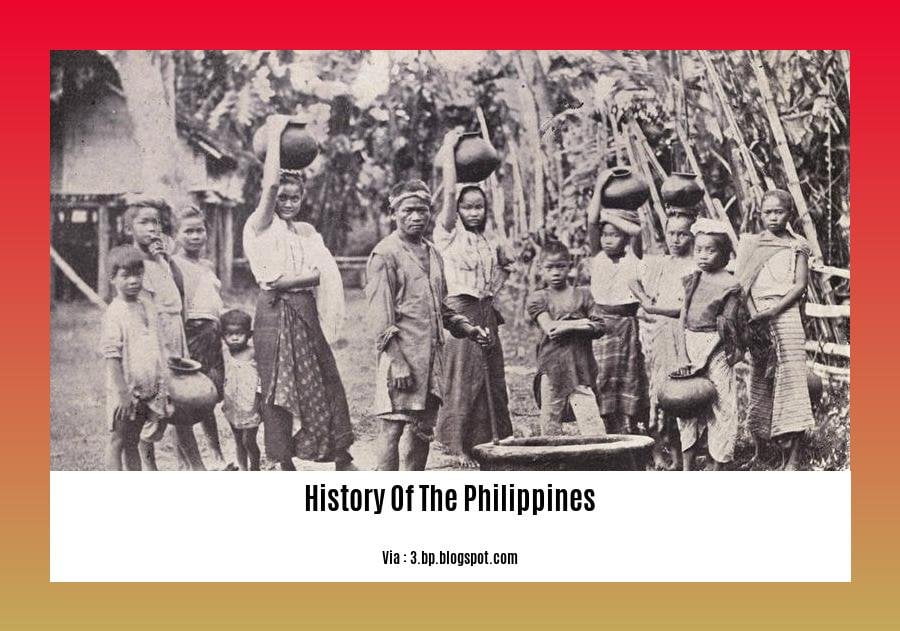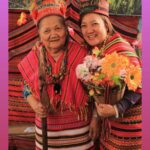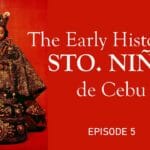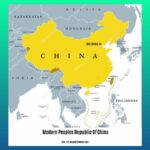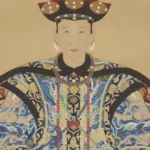Embark on a captivating journey through time as we delve into the enigmatic history of the Philippines. From its pre-colonial roots to the present day, this archipelago has witnessed a kaleidoscope of civilizations, cultures, and struggles. History buffs and curious minds alike will uncover the fascinating narrative of a nation shaped by both triumph and adversity in [Delving into the Enigmatic History of the Philippines].
Key Takeaways:
- Human presence in the Philippines dates back over 700,000 years.
- Diverse cultures and political systems emerged throughout the islands.
- Foreign influences from China, Arabia, Hinduism, Buddhism, and Islam shaped Filipino society.
- The Philippines experienced colonization by multiple powers, including Spain, the US, and Japan.
- The Philippines attained independence in 1946.
History of the Philippines
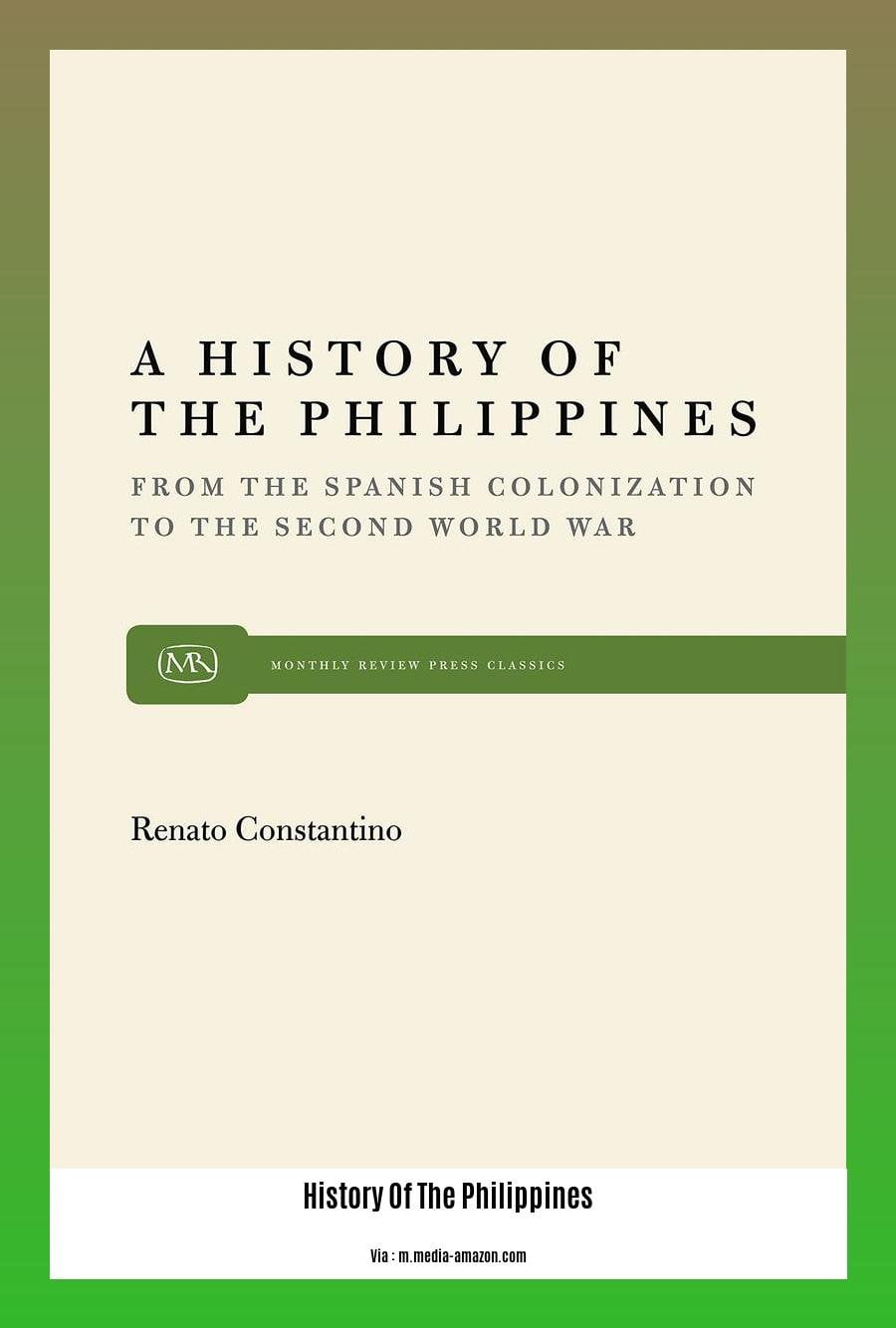
Welcome, fellow history enthusiasts! In this blog, we’ll unravel the enigmatic History of the Philippines, a tapestry woven with triumphs, struggles, and captivating stories.
The Philippines, an archipelago steeped in ancient civilizations, enchants with its diverse cultures and intriguing past. With evidence of human settlement dating back to an astounding 709,000 years ago, this vibrant nation has witnessed the rise and fall of empires.
Pre-colonial Era
Before Western influence, the Philippines was a thriving tapestry of diverse social and political systems. The islands buzzed with trade and cultural exchange, their inhabitants engaging with merchants from China and the Arab world. Hinduism, Buddhism, and Islam left their imprints on the archipelago’s beliefs and traditions.
Colonial Era
The arrival of Spanish conquistadors in the 16th century ushered in a period of profound transformation. The Philippines became a colony of Spain for over three centuries, leaving behind a legacy of Catholicism and Spanish cultural influences. It transitioned under American rule in the 20th century, which lasted until 1946 when the Philippines finally gained its long-awaited independence.
Post-Independence
Newly independent, the Philippines faced challenges in nation-building and economic development. It has since navigated political turmoil, natural disasters, and social change. Yet, through it all, the Filipino spirit has remained resilient and hopeful.
Explore the Philippines’ Past
Delve deeper into the History of the Philippines by visiting museums, exploring historical sites, and engaging with local communities. The country’s rich heritage awaits your discovery, inviting you on a journey through time. Embrace the enigmatic allure of the Philippines, a nation where history pulsates with life, shaping the present and inspiring the future.
Immerse yourself in the pivotal Spanish colonization that shaped the Philippines, leaving an enduring legacy that continues to resonate today. Uncover the heroic struggle of the Philippine Revolution of 1896, where Filipinos valiantly fought for their independence. Witness the transformative Martial Law and People Power Revolution that tested the nation’s resolve and ultimately led to the restoration of democracy.
**History of the Philippines (900–1565)**
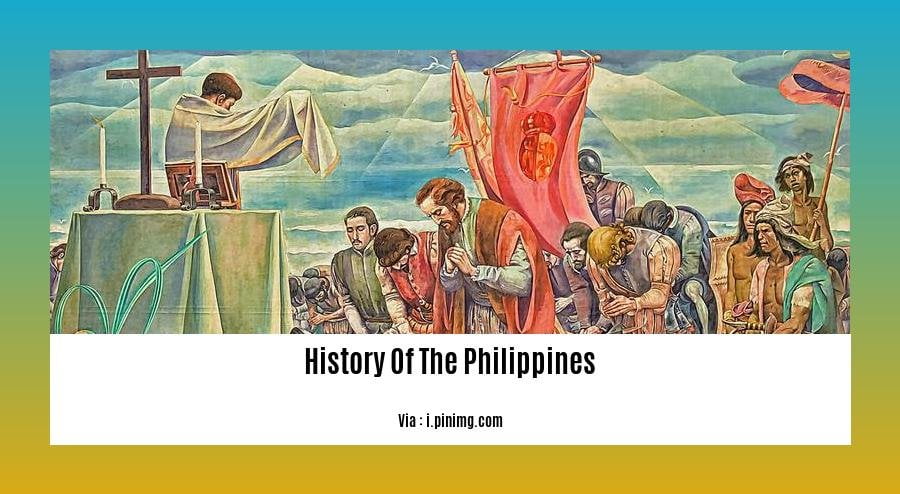
Key Takeaways:
- The Laguna Copperplate Inscription (900) holds the oldest written record in the Philippines.
- Philippine society showcased diversity with subgroups from fishermen to hunter/gatherers.
- Four societal categories existed: classless, warrior, petty plutocrats, and principalities.
- Chinese contact possibly emerged around 982, while Indian influence arrived in the 10th century.
- Islam’s introduction coincided with Muslim traders’ presence around the same time.
The Philippines: A Tale of Cultural Convergence
During the period of 900–1565, the Philippines evolved as a melting pot of diverse cultures. Chinese and Arab merchants brought their influence through trade, while Hinduism, Buddhism, and Islam left their mark on the archipelago. This fascinating period witnessed the rise of sophisticated social and political systems, setting the stage for the Philippines’ rich and multifaceted history.
A Glimpse into Early Philippine Society
Imagine a society as diverse as the Philippine archipelago itself! This period saw the coexistence of classless and warrior subgroups alongside petty plutocrats and principalities. Each group held distinct roles, shaping the intricate tapestry of Philippine society.
The Laguna Copperplate Inscription: Unlocking the Past
The Laguna Copperplate Inscription, dating back to 900, stands as a testament to the Philippines’ rich written history. This ancient artifact provides invaluable insights into the social and political dynamics of the time, casting light on the complex relationships between different societal groups.
External Influences: Shaping Philippine Culture
China’s influence reached the Philippines as early as 982, introducing new technologies and cultural practices. The 10th century marked the arrival of Indian influence, bringing with it linguistic terms and religious traditions. These external influences profoundly shaped the cultural landscape of the Philippines, creating a unique blend of indigenous and foreign elements.
Islam’s Arrival: A New Chapter in Faith
Around the same time as Indian influence, Islam made its presence felt in the Philippines. Muslim traders played a significant role in spreading this new faith, introducing practices and beliefs that would become an integral part of Philippine society.
Conclusion
The period from 900–1565 laid the groundwork for the Philippines’ vibrant and diverse culture. From the Laguna Copperplate Inscription to the convergence of Chinese, Indian, and Islamic influences, this era stands as a testament to the Philippines’ rich and multifaceted heritage.
References:
– History of the Philippines (900–1565)
– The Laguna Copperplate Inscription
History Of The Philippines Essay
Unveiling the Tapestry of the Philippines Through Time
The History Of The Philippines Essay offers a journey through the captivating annals of this Southeast Asian Archipelago. From its earliest human settlements to its colonial encounters and modern independence, the Philippines has been a melting pot of cultures, traditions, and resilience.
Key Takeaways:
- Archaeological findings reveal human presence in the Philippines dating back to 709,000 years ago.
- Diverse indigenous societies flourished before European colonization.
- Spanish rule lasted from the 16th to the late 19th century, leaving a significant impact on Philippine culture, politics, and religion.
- The First Philippine Republic, proclaimed in 1899, fought for independence from Spain and the United States.
- American rule from 1898 to 1946 brought economic and educational reforms, but also political challenges.
- The Philippines gained full independence in 1946 and has since faced various economic, political, and social transformations.
Precolonial Philippines:
- Stone tools and animal remains suggest early human activity thousands of years ago.
- By the 9th century AD, advanced civilizations thrived in the Philippines, engaging in trade and developing complex social structures.
- External influences from China, India, and Arab traders shaped Philippine culture before European arrival.
Colonial Rule and Revolution:
- Spanish explorers claimed the Philippines for the Spanish Crown in 1565, establishing colonial rule that lasted over three centuries.
- Filipino resistance and revolts against Spanish rule culminated in the Philippine Revolution of 1896 and the proclamation of the First Philippine Republic.
- The Philippine-American War (1899-1902) resulted in the US gaining control of the Philippines until 1946, shaping the country’s political and economic landscape.
Independence and Modern Philippines:
- The Philippines gained independence from the US in 1946, embarking on a new era of self-governance and political evolution.
- The country has faced challenges such as economic disparities, political turmoil, and natural disasters, but remains a vibrant and resilient democracy.
- Modern-day Philippines is a thriving nation with a rich cultural heritage and a bright future ahead.
Sources:
FAQ
Q1: When did humans first settle in the Philippines?
A1: Archaeological evidence indicates human presence in the Philippines as early as 709,000 years ago.
Q2: What was the earliest known written record in the Philippines?
A2: The Laguna Copperplate Inscription (900) is the earliest known written record in the Philippines.
Q3: Which foreign powers colonized the Philippines?
A3: The Philippines was colonized by Spain, the United States, and Japan at different periods of its history.
Q4: When did the Philippines gain independence?
A4: The Philippines gained independence in 1946.
Q5: What were some of the societal categories in early Philippine society?
A5: There were four societal categories: classless, warrior, petty plutocrats, and principalities.
- Senior at What Age: Benefits & Eligibility Guide - March 29, 2025
- Unlocking Senior Benefits: How Old is a Senior? Your Complete Guide - March 29, 2025
- Master Russian Politeness:A Guide to Saying Please - March 29, 2025
